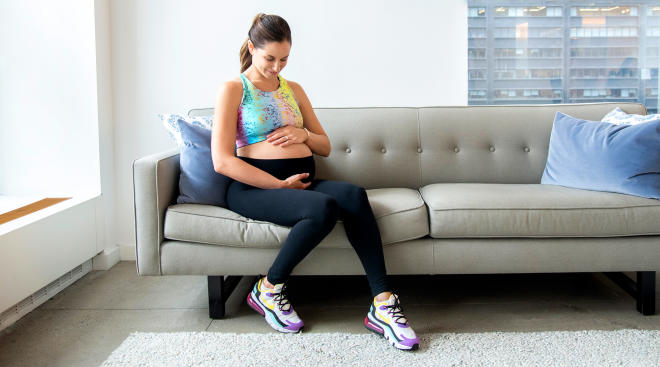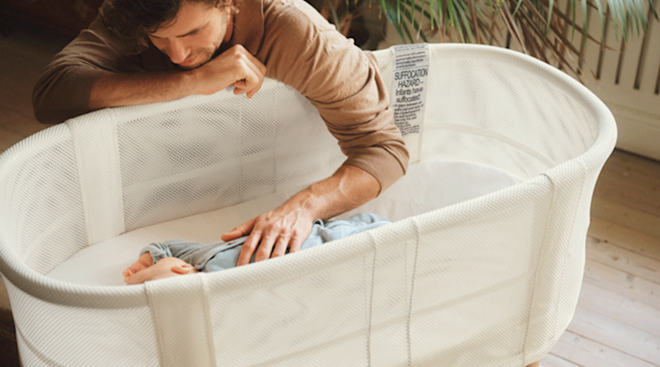9 Things I Wish I Had Known About Birth Before I Had My First Baby
Our bodies can do amazing things, and delivering a baby is one of them. The feeling of giving life to a living, breathing human being is surreal. But while the outcome of childbirth is absolutely beautiful, the whole aspect of labor and delivery is not quite as glamorous.
As a first-time mom, I was filled with anxiety about how exactly labor would unfold. Toward the end of my pregnancy, I began doing all my research on childbirth. I consulted friends and coworkers, took hospital tours, participated in childbirth classes and took prenatal yoga classes. I thought I was fully prepared for having the drug-free birth that I was hoping for, but it just didn’t happen that way. As it turned out, there are so many variables that happen during labor that ended up being out of my control.
Now, as a mom of two (with a third on the way!), I can think of so many things I wish I had known about childbirth before my first baby. But some things you really only learn through experience. Here’s what I’d tell my pregnant self and other moms-to-be about what to expect during birth.
For my first baby, I planned to labor at home for as long as possible so I could get to the hospital when it was time to push. Instead, I needed to be induced after my water broke early and my contractions didn’t start on their own. I had a heavily medicated birth with Pitocin and an epidural in order to get the baby out on time. None of it went as I had pictured, except for the fact that I delivered a healthy baby girl. I realized that I needed to let go of my birth plan, be flexible and embrace how my body was meant to birth a baby.
The last few weeks of my first pregnancy brought me so much anxiety about when and how labor would start. Will I be at work? Will my husband be home? Will it be painful? Of course, all that worrying was for nothing, since I wound up being induced. When I was pregnant with my second child, though, I started experiencing contractions at home—but they were subtle at first. I didn’t think I could possibly be in labor yet because I was two weeks early, so I waited through them.
As I started to time them, I noticed the contractions were coming at pretty regular intervals, but they didn’t seem very painful. Rather, they felt like period cramps—not what everyone makes contractions out to feel like. My doctor also mentioned that I should feel my whole belly contracting when labor starts, but I was experiencing cramps down low by my groin, so I just assumed the cramps were a false alarm. Once the pain and intensity went from 0 to 60 very quickly, I knew that I was actually in labor. Luckily, as soon as it started getting bad we got in the car and headed to the hospital, but had I known I really was in labor, I would have been on my way long before that!
It’s true that labor can escalate very quickly and intensely, but that doesn’t necessarily mean it’s going to be over as fast as it started. Case in point: I was in the hospital for about 20 hours before my first baby was born! Those long hours of labor may sound unbearable, but I wasn’t experiencing full labor pains the entire time—it just took my body that long to get prepared for delivery. Plus, I had an epidural, which reduced the pain tremendously to the point where I didn’t feel anything for most of those hours.
When I was experiencing pain, there was at least a light at the end of the tunnel. The actual contractions (which is when I experienced the most pain) lasted for only 30 seconds at a time. While you’re experiencing it, it can feel like 30 minutes, but once the contraction is over you do get a break for three to five minutes where you don’t feel any pain.
When it came time to deliver my first baby, I was induced with Pitocin. With my second child, I went into labor naturally. From personal experience, I’d say contractions from Pitocin are much more intense and painful than natural contractions. While I was hoping to have an unmedicated birth that first time around, the doctor warned me that labor would be much more painful this way and that an epidural was almost a necessity when using an artificial intervention for contractions. He was definitely right—I couldn’t get that epidural soon enough!
There’s no right or wrong way to deliver your baby, whether it’s with an epidural or not. But if you’re planning on getting pain relief, don’t be scared. It’s advice I could have used myself. I was so afraid of a large needle being inserted into my spinal cord and making me numb from my waist down. I couldn’t help but wonder if it could cause any permanent damage or worry about just how painful that huge needle would be. But I realized there was nothing to be afraid of. When you’re experiencing the pain of labor contractions, there’s really not much that could hurt more. So in comparison, the epidural was nothing! Plus, they use topical numbing so you barely feel a pinch. (Also, you’re not completely numb—I wasn’t aware that I would still have a bit of pain and pressure during contractions even after the epidural kicked in.)
I’m usually quite modest about showing my body, but definitely not in childbirth. During labor and delivery I was just bearing it all for the world to see, and I didn’t think twice about it. Health professionals were surrounding me, but I had no problem stripping off my hospital gown during the sweatiest and most grueling part of delivery, exposing my breasts and private parts in front of them all. And yes, there was poop, vomit, farts, blood and amniotic fluid coming out of me, but it’s all a natural part of the process.
In both births, as soon as my babies started to descend down through the birth canal, I could feel my body start to take over. There’s a natural instinct that allows your own muscles to take over the birthing process. I had heard about this well before I went into labor, and I was under the impression that the baby would just glide out once they were in position. Instead, it took a ton of effort to push my babies out. I pushed for two hours with my first child, and after about one hour I was ready to give up. It was exhausting! The nurses and doctors were telling me exactly how to push, but it seemed like I wasn’t making any progress. I was, of course, and in the end I successfully pushed those babies out.
During my first birth, I felt so relieved once my baby was finally on the outside—it was over and she was healthy. But a couple minutes after the baby came out, I had to push out the placenta along with all the excess fluids. It’s not nearly as painful as delivering a baby, but you still experience some contractions and you have more work to do. Once that was over, I needed stitches. I still felt all of that, but it was nowhere near the intensity of delivery so it didn’t hurt that badly. I also hadn’t factored in postpartum recovery, which can be pretty painful in its own right. Still, it’s all worth it!
Although thousands of babies are born everyday, that doesn’t mean it’s a simple and easy process for women to go through. I was lucky enough to avoid any serious issues or complications during and after childbirth, but I still experienced so many emotions throughout delivery, and the memories lingered for a long time. However, after all is said and done, I can still look back and say it was the most beautiful experience because of the love I feel for my two little ones.
I’m Marissa LaBuz. My days are filled with starting tickle wars and dance parties with two energetic toddlers and wondering how long I can leave the house a mess until my husband notices. When I don’t have my hands full of children, I enjoy a glass (or three) of wine, reality TV and country music. In addition to being a full-time occupational therapist, I run an Etsy shop called Just Simply Mom Designs and two blogs: Just Simply Mom and Teaching Littles.
Please note: The Bump and the materials and information it contains are not intended to, and do not constitute, medical or other health advice or diagnosis and should not be used as such. You should always consult with a qualified physician or health professional about your specific circumstances.
Navigate forward to interact with the calendar and select a date. Press the question mark key to get the keyboard shortcuts for changing dates.





















































